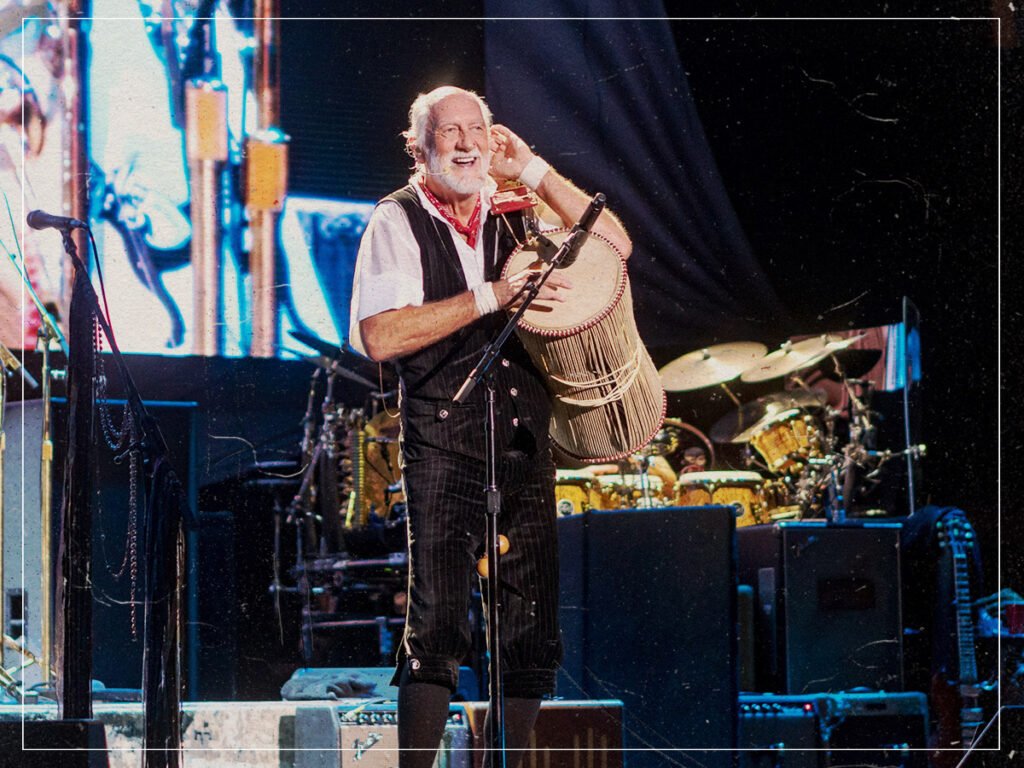
(Credits: Far Out / Raph Pour-Hashemi)
Nobody could have predicted Fleetwood Mac‘s commercial and artistic trajectory way back in 1967. Formed as a strict blues roots-rock outfit with subtle psychedelic washes helmed by guitar maestro Peter Green, revolving members and a veer toward anthemic soft rock would push the band to one of the day’s most successful acts.
With the ‘second’ classic line-up settled on 1975’s eponymous LP, follow-up album Rumours, two years later, would dominate global charts and thrust Fleetwood Mac firmly into the centre of the pop mainstream; their 11th LP still stands as the eighth biggest-selling record of all time.
While purists were pining for the days of ‘Albatross’, Fleetwood Mac was winning a whole new fanbase with their soap opera phase. Mutual infidelity, failed marriages, spurned grievances, and mountainous levels of cocaine yielded God-given pop rock from ‘Dreams’ to ‘Go Your Own Way’, establishing the template that would carry them through the 1980s across the bitter Mirage and the glossy behemoth of 1987’s Tango in the Night.
Despite becoming pop royalty, internal dramas grew so severe that guitarist Lindsay Buckingham backed out of a scheduled tour and reportedly met with a physical altercation with former lover and band singer Stevie Nicks.
Stood at the centre of Fleetwood Mac’s turmoil with gangly permanence was founding member and drummer Mick Fleetwood. Forming an unusual face for the band, he slipped into the role of supplying the pop sensation with a strange visual identity, stood bare-chested with wide-eyed surprise and holding a toy doll on 1968’s Mr Wonderful. On the hand side, he can be seen memorably courting Nicks on Rumours‘ cover, donning a svelt waistcoat and two lavatory ball chains where his bollocks are. It worked, and for the pair romantically involved later that year.
With such a varied background across blues, rock, and pop, fans may well be curious as to Fleetwood’s heroes. Reaching back into his youth, Mac’s drumming stalwart inexorably drifted to one major figure of the 1960s counterculture. “I used to go down and see The Rolling Stones at Eel Pie Island [South London] when I didn’t know them at all,” Fleetwood told Classic Rock in 2008. “Then we [The Cheynes] went on tour with them in 1964. And to this day, Keith Richards is one of the three people who call me Michael; John McVie and Eric Clapton are the others. I don’t know why, but it’s like [admonitory tone] ‘Michael!’ There’s only one Keith. His lifestyle is his world. I thought I was a heavy drinker but… my God!”
It can’t be overstated how seismic the Stones’ impact was on the swinging pop scene and beyond. Helping to break the British invasion just behind The Beatles, Richards’ immortal riffs and authentic mine of America’s musical heritage saw them inhabit a lofty realm of rock mythology no band has ever touched since, influencing their peers as well as future generations of artists.
Despite standing as contemporaries and enjoying enormous success, Fleetwood, at heart, is still just a fan: “The Stones really are my favourite band. My dream has always been that Charlie Watts gets the flu and I get to save the day and play with the Stones for a week. But the call has never come”.
Related Topics

